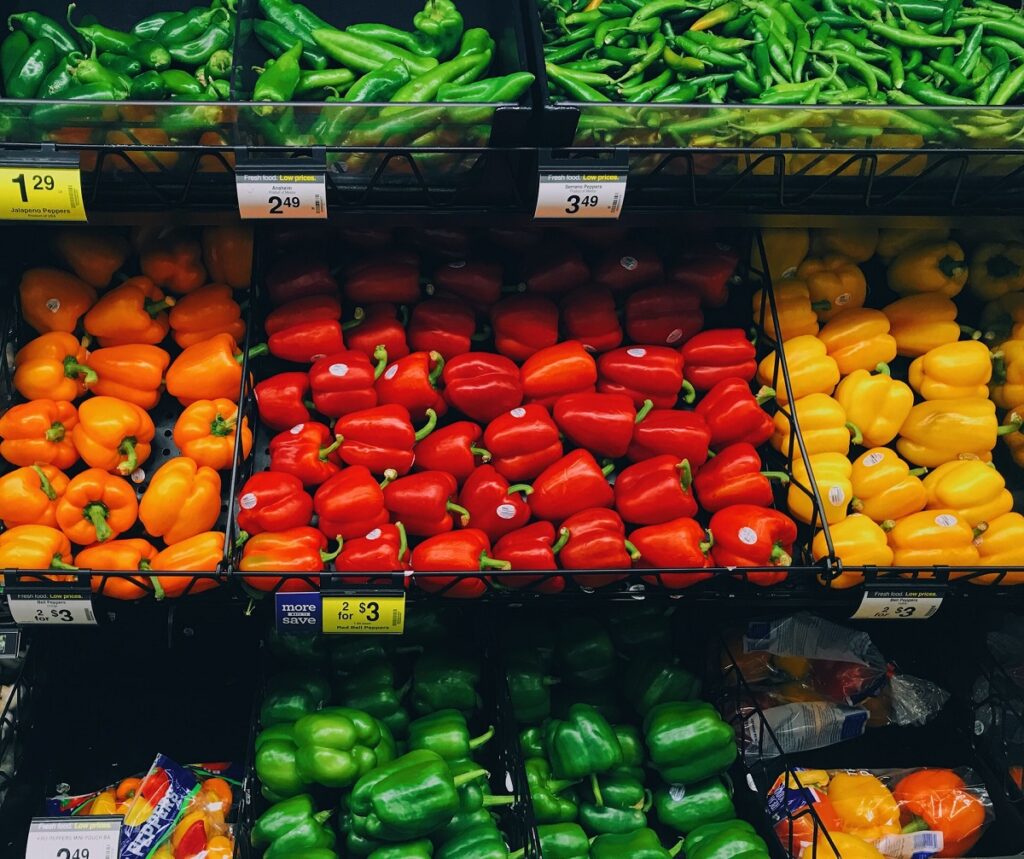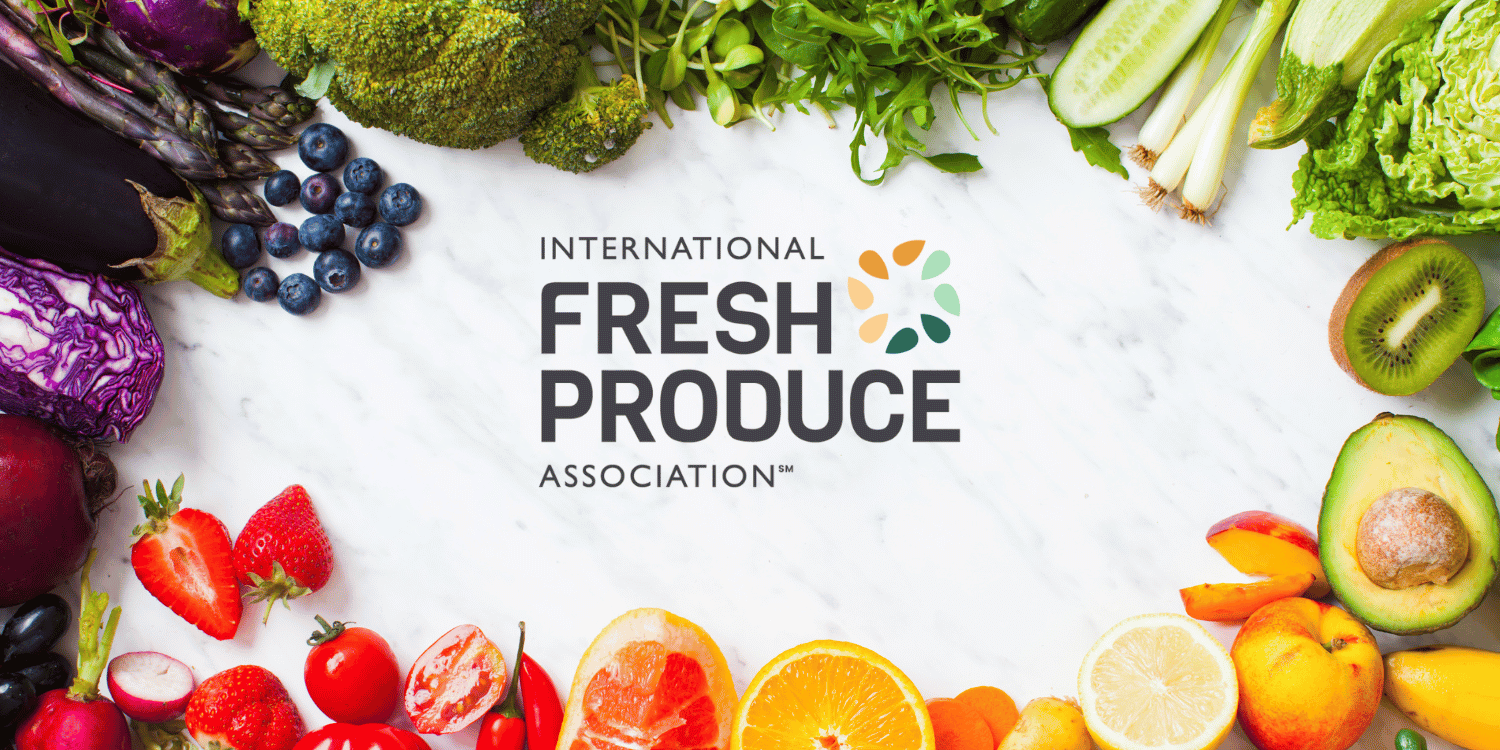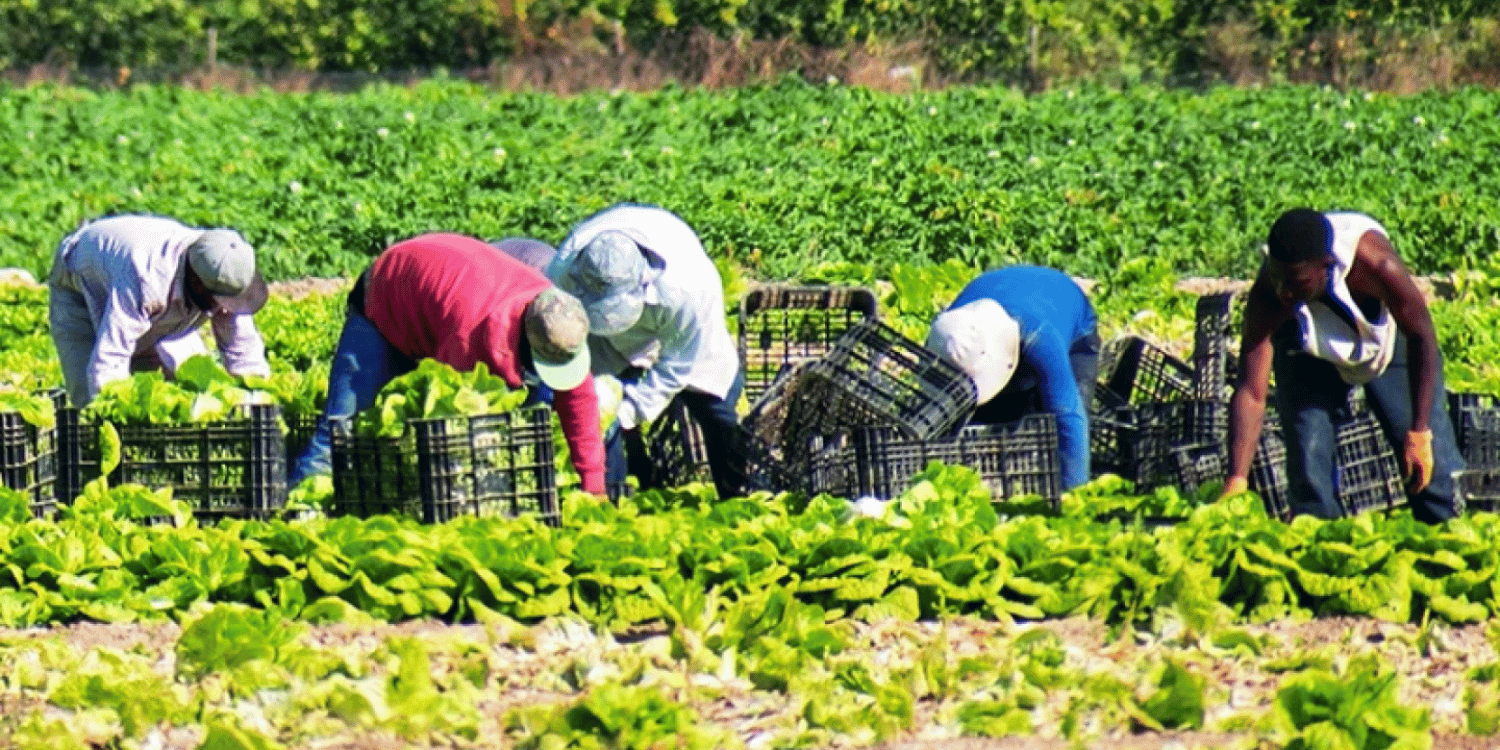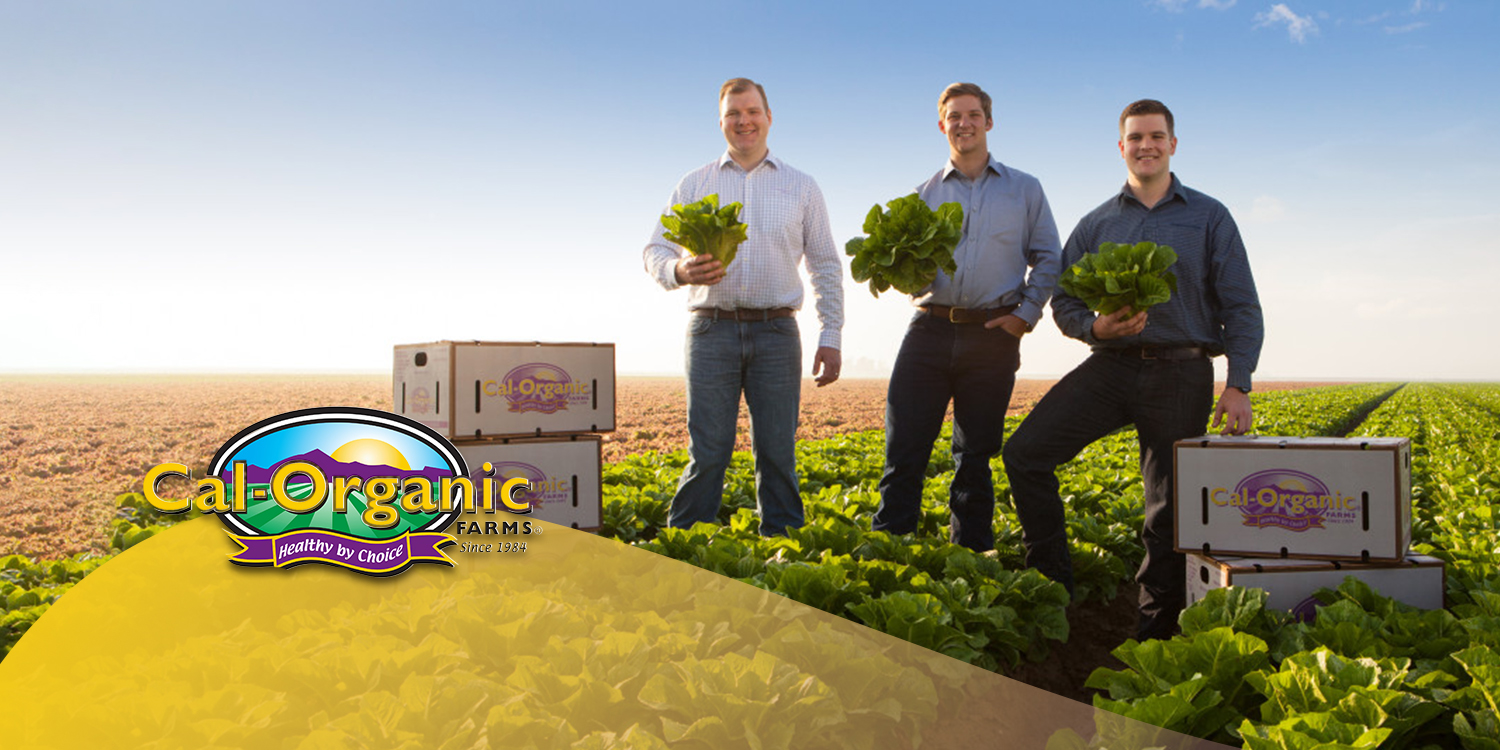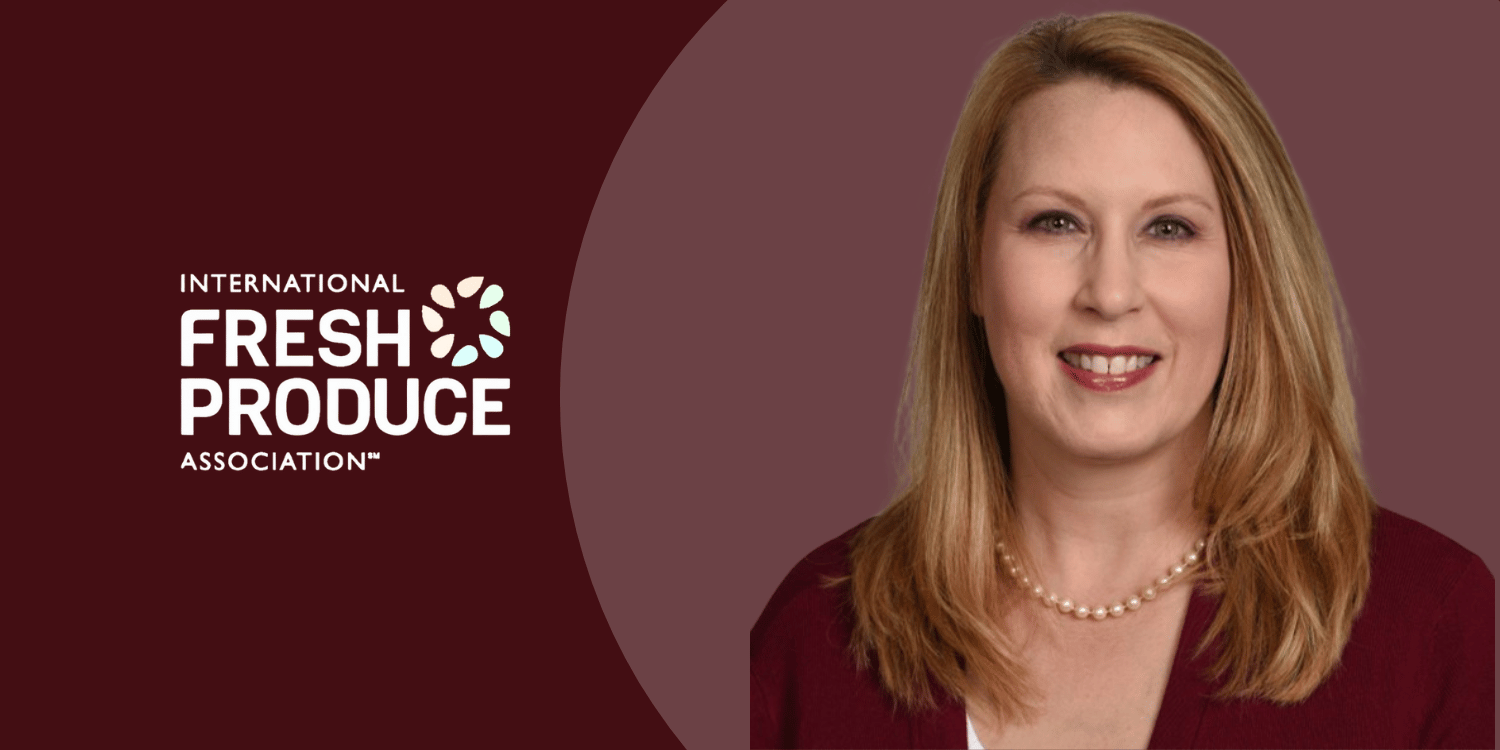Securing prime real estate on supermarket shelves is critical for the success of produce vendors.
It positions your products at the eye and hand level of a wide range of customers.
Unsurprisingly, the competition for these spots is fierce.
Various strategies and tactics can be utilised to increase your chances of winning and maintaining this coveted space.
This can often mean the difference between significant sales and stagnant stock.
Understanding these strategies is essential for anyone who aims to increase their market presence and sees their products shine in the commercial spotlight.
Contents
- Strategies To Land Premium Shelf Space For Your Produce
- 1. Understand Store’s Customer Demographics
- 2. Showcase Product Uniqueness
- 3. Offer High Profit Margins
- 4. Promote Seasonal Relevance
- 5. Provide Eye-Catching Packaging
- 6. Maintain Consistent Supply
- 7. Sustain High Product Quality
- 8. Propose Store-Exclusive Products
- 9. Initiate Effective Promotional Campaigns
- 10. Enable Easy Restocking Design
- 11. Encourage Product Sampling Events
- 12. Show Proof of Product Popularity
- 13. Offer Training for Store Staff
- 14. Design Display-Friendly Packaging
- 15. Form Productive Relationships with Retailers
- Final Thoughts
Strategies To Land Premium Shelf Space For Your Produce
1. Understand Store’s Customer Demographics
One of the essential strategies to landing premium shelf space for your product involves a thorough understanding of the store’s customer demographics.
Knowing this allows a vendor to tailor their products to meet the demands and preferences of a store’s specific customer base.
Demographic data may include factors such as age, gender, income levels, and geographical location.
Other relevant information may include lifestyle interests, shopping habits, and consumer behavior trends.
With this information, you can align your product with the customer’s values, preferences, and lifestyle.
The process involves segmenting the store’s customers, identifying the primary demographic that shops there, and then tailoring products to appeal to them.
This also assists in pricing products appropriately within a range acceptable to the target demographics.
The design, packaging, and marketing messages can also be adapted to resonate more with the defined consumer class.
Furthermore, this understanding helps you create a product placement strategy that entices customers to make a purchase.
Knowing your customer demographics allows you to tailor your product and its presentation to best appeal to the customer base of the store in which it is displayed.
This is critical because a product that appeals perfectly to a certain demographic group will have a better chance of selling successfully.
By knowing the shopper’s demographic, you can predict their preferences and buying habits, making it easier to place a product they are likely to purchase.
Ultimately, a thorough comprehension of a store’s customer demographics isn’t just beneficial for scoring premium shelf space; it significantly improves the odds of your product’s success.
By watching the video, you may learn more about how to conduct target market research and methods to effectively identify and understand your target audience’s characteristics.
This can aid you in fine-tuning your strategy to secure that coveted premium shelf space.
2. Showcase Product Uniqueness
The most fundamental step towards securing premium shelf space for your produce is identifying and flaunting what makes your product stand out from the rest.
Customers are often drawn to unique products that are different from the repetitive offerings in the market.
Uniqueness can be emphasized through a wide array of factors, including product design, ingredients, or even functionality.
Creating an innovative product that captivates consumers and fills an empty hole in the market helps your product to stand out on the shelf.
Not only will this differentiate your product from competitors, it will aid in drawing the customers’ attention towards your product amid a sea of similar offerings.
Different is better than better.
When your products stand out, they become the talk of the town, influencing buying decisions and enhancing brand visibility.
By showcasing your product’s uniqueness, you are not just selling a product; you’re marketing an entire experience.
Creating a unique product is not just about formulating something completely different but also about finding a way to make a commonplace item extraordinary.
Capitalizing on consumer trends, such as clean labels, organic products, or sustainability, can create an opportunity to differentiate your product.
An innovative product with a unique selling proposition increases its chances of being noticed by both retailers and consumers.
Even more so, once recognized, an innovative product receives positive word-of-mouth, effectively furthering your reach without any additional marketing expense.
Paying attention to every minor detail, from the ingredients to the packaging and pricing, can accumulate substantial differences, making your product distinctive in the market.
In turn, these noticeable differences compel retailers to allocate premium shelf space for your merchandise as it stands out among the competitors and substantiates its uniqueness.
Buyers, on the other hand, are more likely to purchase your items because they offer something different than the array of standardized options on the market.
Moreover, a unique product creates more buzz online and offline, thus, commanding a more substantial market share and elevating your brand’s visibility further.
To summarize, showcasing your product’s uniqueness not only distinguishes your brand but helps secure premium shelf space by attracting the attention of both retailers and consumers.
3. Offer High Profit Margins
As a manufacturer aiming for premium shelf space for your produce, a strategy that cannot be overlooked is ensuring that your products offer high profit margins for the retailers.
High profit margins occur when the difference between the selling price of the product and the cost of the produce is substantial.
Retailers are more likely to allocate preferential shelf space to products that will bring them a higher profit.
When you offer a product with a high profit margin, it creates a willingness in the retail store to promote your produce over others.
The key is to ensure your product offers an attractive balance between cost and benefit for both the retailer and the end customer.
Contact your retailer, explain the margins your produce offers and show how the margins can be advantageous for them.
A high profit margin not only benefits the retailers, but also leaves a buffer for possible discounts and promotions that can lure more customers.
Make it important to focus on producing quality products, but ensure these are set at a price point that still offers good profits to retailers.
In doing so, higher profits translate to stronger partnerships with the retailer, thus increasing the likelihood of securing those premium shelf spots.
The resource above can provide insights on various strategies to increase profit margins in retail and consequently grow your business.
By investing time in watching it, manufacturers will understand how to make strategic decisions with pricing and costs that align with retailers’ profit expectations.
Enhanced profit margins provide incentives to retailers to promote your products, and this way, hold a better chance of winning that desirable shelf space for your products.
Sometimes, offering high profit margins to the retailer might require sacrificing a chunk of your own profits.
However, in the long-term, this strategy can significantly improve your product’s visibility with the possibility of increasing sales, thus making up for the reduced profit per unit.
Remember, it’s a balance and you have to strategically negotiate on these high margins while still being able to make a profit on your end.
Pricing is a complex strategy that requires the consideration of several factors such as manufacturing costs, competitor pricing, and customer expectations, among others.
4. Promote Seasonal Relevance
Seasonality is a key aspect of fresh produce sales and can markedly influence consumer purchasing behavior.
It is vital for producers to understand this trend and use it to their advantage to secure premium shelf space.
Producing seasonal produce allows retailers to offer customers a diverse array of produce throughout the year, keeping their inventory fresh and enticing.
This strategy can also include promoting products relevant to the special events in the year, such as Halloween pumpkins or Christmas oranges, which are high demand items during their respective seasons.
Supporting seasonal relevance in your produce assortment can provide a competitive edge, lead to increased sales, and ensure a regular presence in the premium spots of the store.
This strategy leverages the fact that consumers often associate certain produce with specific seasons or holidays, and their purchasing behavior is influenced by it.
Beyond just the specific produce items themselves, consider providing recipe ideas or suggestions for seasonal dishes that incorporate your produce, which can add additional value for the customer and also sway the retailer in your favor.
This approach to seasonal relevance could also involve engaging in partnerships with local chefs or food bloggers to create original seasonal recipes and thereby indirectly promote your product.
Also, if you offer any kind of unique or heirloom varieties that can be linked to specific seasons or regional traditions, this can be a big selling point.
Seasonality and local sourcing are a pretty big draw for millennials and other health-conscious demographic groups, who constitute a large portion of the premium produce customer base.
By consciously working on the seasonality angle, your produce not only stands out but also matches consumers’ mental picture of what they are looking to buy at specific times of the year.
Engaging with retailers’ marketing departments, supplying them with requisite information and material for in-store promotions centered around seasons and holidays can also go a long way in making sure your produce stays relevant and in-demand.
In essence, ensuring seasonal relevance helps develop a symbiotic relationship between the supplier and the store, with each party benefiting and supporting the other.
This collaborative approach can help your brand be viewed as a valued partner rather than a mere vendor, thereby ensuring your produce maintains a prominent and premium position on the shelves all year round.
Staying engaged with your retailer partners continuously and providing them with new seasonal product choices can further strengthen your relationship and maintain the visibility and credibility of your produce.
In essence, promoting your products’ seasonal relevance isn’t just a one-time effort, but a persistent strategy aimed at maintaining your place on premium shelf space.
5. Provide Eye-Catching Packaging
The power of visual appeal in merchandising should never be underestimated.
An appealing packaging design can be a critical factor in a customer’s decision-making process.
We often judge items based on their exterior, and this is particularly true in the retail setting.
Effective packaging design can enhance the perception of quality and value.
Consumers often subconsciously associate a product’s packaging design quality with its quality; therefore, a premium packaging can indirectly reflect a premium product.
This observation underscores the need to invest heavily in the design of your product packaging.
Product packaging should be both practical and visually appealing.
It needs to capture the attention of the shopper while simultaneously conveying key information about the product.
There have been numerous strategies tried and tested to provide eye-catching packaging design.
These include using bold and vibrant colors, incorporating striking imagery, ensuring text is clear and easy to read, and using unique shapes or structures for the physical package itself.
Opt for high-quality materials when developing your packaging design.
People often equate the physical weight and texture of packaging with the product quality.
To make your product packaging stand out even more, consider integrating elements of storytelling.
This can help to create an emotional connection with shoppers, further driving the desirability of your product.
In addition, understanding your target audience is fundamental when designing packaging.
Consumer preferences can widely vary based on numerous factors including age, location, and lifestyle.
It’s important to have a strong brand identity when designing your packaging.
This should be reflected across all elements that make up the packaging design, ensuring it aligns with your brand’s values and aesthetic.
Always prioritize legibility in your designs .
It’s important that consumers can easily read and understand the product information.
Moreover, this information should be communicated in a concise but comprehensive manner.
Lastly, keep in mind that packaging design trends constantly evolve.
However, always ensure that any design changes align with your brand and resonate with your target customers.
Driving consumer attention and interest primarily through packaging is an effective way to secure premium shelf positioning.
This is why understanding packaging design principles are essential for any retailer looking to secure premium shelf space for their products.
6. Maintain Consistent Supply
Securing premium shelf space for your produce is a task closer to a marathon than a sprint, hence it necessitates continuity and consistency.
The provision of a regular, steady supply of your product is vital not only for your sales but also for the retailers you partner with.
Inconsistency in supply can lead to empty shelves, risking not just revenue loss, but also deterioration of your brand’s reputation and trustworthiness in the market.
Therefore, in the journey to secure premium shelf space, the importance of maintaining consistent supply cannot be overstated.
You might have the finest produce, the most attractive packaging, and the best prices, but if you cannot ensure a stable supply of your produce to the retailers, all the rest become insignificant.
This quote reflects the true essence of maintaining consistency in supply chain management.
The inability to ensure a reliable supply tarnishes all other efforts put into quality, packaging or pricing strategies.
Moreover, inconsistent supply can also lead to lost confidence in your brand by retailers, and it may also lead to the loss of the hard-earned premium shelf space, causing customer disappointment and revenue loss.
Given these potentially damaging effects, it becomes crucial that your supply chain is agile and able to adjust swiftly to fluctuations in demand, and that you always have inventory ready to replenish the stores.
Having good standing relationships with all partners involved in your supply chain, from the raw material providers to transport companies, can help respond quickly to market changes and maintain a steady supply.
Furthermore, using advanced analytics and demand forecasting tools can help you anticipate demand and plan your supply effectively.
Also, integrating digital solutions into your supply chain management can offer real-time visibility in the inventory, enabling you to replenish the stock seamlessly and always remain one step ahead.
Establishing a robust system for inventory management is highly beneficial in ensuring that supply matches demand.
Preemptive bulk ordering or production can be equally effective solutions to maximize availability.
Offering your produce in smaller case sizes can ensure greater turnover and freshness, while also enabling retailers to restock more frequently, thereby maintaining consistent supply and product freshness.
Keeping an open line of communication with the retailers and regularly updating them about the availability of the product helps in gaining their trust and longevity of the relationship.
In sum, supplying consistently to your retailers is an essential building block if you wish to secure and retain the lucrative premium shelf spaces for your produce.
7. Sustain High Product Quality
In the competitive business world of today, maintaining and sustaining high product quality is an indispensable strategy for securing premium shelf space in major outlets.
This requirement goes beyond simple aesthetics or packaging, diving into the actual value the product gives to the consumer.
Product quality envelops all of the product’s features that have the ability to meet consumers’ needs and wants.
It determines the degree of product’s perceived reliability, performance, and appeal to the customer.
This means that you need to ensure that your products are reliable, durable, and above all, safe for consumers to use.
Quality assurance mechanisms need to be established to control and eliminate product defects, ensuring consistency in product quality.
By ensuring your product’s quality is of high standard, retailers will have increased confidence in stocking your products, and customers will be more inclined to purchase, leading to increased sales and better shelf position.
Sustaining a high product quality involves constant monitoring, testing and reviewing of your product and production processes to identify any potential areas of weakness or points of failure.
It involves ensuring that all your suppliers, raw materials, and production processes meet your quality standards, as well as being consistently reviewed and improved upon.
Each product should be manufactured and delivered to the stores with the exact same standards, showcasing that your products and brand are reliable.
When a product fails to meet the set quality, the impact can be detrimental to your brand’s image and diminished customer trust, which may result in the loss of premium shelf space.
Quality should not just be a one-time thing, rather it should be a sustained effort that is inbuilt into your company’s culture and projected to your customers through your products.
To convince retailers and customers of the high quality of your products, it is often useful to have independent quality certifications or endorsements from trusted bodies or organizations.
This could serve as a guarantee of the quality of your product, and enhance your chances of landing premium shelf space in stores.
Consider investing in quality improvement initiatives and trainings for your staff to ensure everyone understands the importance of maintaining high product quality.
Customer feedback and reviews can also serve as a significant tool in sustaining high product quality.
They provide valuable insights into your customer’s expectations and experiences, allowing you to continually review and improve your product quality to meet their needs and expectations.
8. Propose Store-Exclusive Products
Proposing store-exclusive products presents a significant step in gaining premium shelf space for your product.
This approach adds uniqueness and a sense of exclusivity to the retail location, a competitive edge in the market.
Retailers often value the exclusivity because it natually drives more customers to their outlets, knowing they cannot get the product elsewhere.
This can result in a win-win situation for both your product and the retailer.
Releasing a store-exclusive product ranges from entirely unique products to existing items with unique twists such as special editions or customized packaging.
This variety can often intrigue customers and boost sales.
A product that can only be found in their specific retail location might make customers feel they are part of an exclusive club, creating a sense of loyalty towards the store.
This implies that store-exclusive products have the potential to build a strong customer-loyalty base.
These loyal customers are likely to return to the store, which leads to an increase in repeat sales.
This growing customer base and the higher footfall can stimulate the interest of retailers to offer your products a premium shelf space.
Exclusivity, however, does not come without its challenges.
Effective supply chain management is crucial to maintain exclusive products.
If these items frequently run-out, it might frustrate customers and may lead to loss of that exclusivity appeal.
Product quality should not be compromised when introducing store-exclusive products.
Ensuring high-quality exclusives implies that your brand values quality over quick profits.
This attitude can earn the long-term trust of both the retailer and the customers.
In addition to quality, continued product development and innovation are key.
Offering new, unique items on a regular basis can keep customers interested and engaged.
This also implies to the retailer that your brand is continually evolving and not becoming stagnant.
Creating store-exclusive products also requires a deep understanding of the retailer’s target customer base.
Customizing products tailored to their needs and preferences can drastically enhance the appeal of the exclusive offering.
Collaborating with the retailer’s team to design and execute promotional campaigns specifically for the exclusive product line is worth considering.
Effective campaigns could potentially increase product visibility and, consequently, sales.
To summarize, proposing store-exclusive products can be an effective way to secure premium shelf space for your product.
However, it requires a thought-out strategy, a deep understanding of the target market, effective supply chain management, and a commitment to maintaining high product quality.
Regularly refreshing the exclusive lineup with new, exciting products and supporting them with promotional campaigns can help maximize the impact of this approach and lead to sustainable, long-term success in the marketplace.
9. Initiate Effective Promotional Campaigns
Effective promotional campaigns are crucial not only to introduce your product to the market, but also to ensure a prominent positioning on the store shelves.
These campaigns should be designed in a way that they attract both the retailers and the customers.
Eye-catching visuals, unique messaging, and value-adding offers are some elements that can make a promotional campaign stand out.
Before launching a campaign, it’s crucial to have a deep understanding of your target market.
A smart promotional campaign directly speaks to its target audience’s preferences and needs.
It is only when the campaign resonates with the customers’ preferences, they are persuaded to try out the product.
Further, this creates a demand among the customers, making the retailers more inclined to allot premium shelf space for your product.
In addition to the customer preferences, it’s also important to consider the current market trends and competitor strategies while designing your promotional campaigns.
It’s not uncommon to see similar products vying for attention on the store shelves.
A well-planned promotional campaign can give your product a competitive edge and ensure its better visibility.
In-store promotions and deals, such as discount offers or buy-one-get-one deals, are an excellent way to drive immediate sales.
Such campaigns not only increase the product’s sales, but they also create a buzz among the customers, thus boosting its popularity.
This insightful video demonstrates how to strategically plan promotional campaigns.
These promotional tips and tricks discussed in the video will certainly aid in making your product a prominent choice for retailers and customers alike.
To amplify your promotional efforts, you can also leverage digital mediums.
Social media campaigns, email marketing, and targeted online ads can enhance your product’s visibility and reach, thus motivating more customers to look for your product on the store shelves.
Remember, the key to a successful promotional campaign lies in its strategic planning, efficient execution, and continuous monitoring and optimization.
Each promotional activity should serve to highlight your product’s uniqueness and translate it into a preferred choice for the customers, thus securing it a premium space on the store shelves.
10. Enable Easy Restocking Design
With competition for premium shelf space at an all-time high, any tactics to make your product more attractive to retailers is a step in the right direction.
One such strategy is to enable easy restocking design.
In the retail world, efficiency is key.
Store workers and management need to be able to easily and quickly restock your products onto the shelves to keep up with demand.
If the design of your product’s packaging makes this difficult, it can actually deter retailers from stocking your produce, no matter how popular it might be with consumers.
The importance of easy restocking design cannot be overstated, especially in a busy retail environment.
This statement stresses how essential it is to consider every aspect of product presentation, including its ease of restocking.
The easier it is for retailers to handle, display, and restock your product, the more likely they are to carry it.
Retailers are looking for products that not only sell well but also fit seamlessly into their processes, with minimal time or effort required.
Making restocking effortless can be as simple as designing a clear, intuitive box or packaging layout.
The design needs to indicate the correct way to open and display your product, as well as facilitate an easy restocking process when the shelf supply depletes.
Package durability also factors into this equation.
A weak or easily damaged package can stall restocking efforts and even result in product waste, which retailers certainly want to avoid.
Moreover, bulks or case packs should be easily breakable so that shelf stockers can rapidly replenish supply without having to wrestle with the packaging.
This saves precious time that can be better utilized in customer service or other store operations.
Labels with barcodes play a central role in easy restocking.
They provide a way for retailers to quickly scan and inventory items.
Make sure your labels are easily scannable and contain the necessary product information for swift operations.
It’s also wise to consider the size of your packages.
If they’re too large or unusually shaped, they may be difficult to restock in a hurry.
While unique shapes and sizes can draw attention to your produce, they should not sacrifice ease of restocking.
Stackability is another important aspect for easy restocking and optimal shelf space management.
Products that can be stacked neatly and safely are more desired by retailers as they make good use of vertical shelf space.
Innovative product design and careful consideration of the needs of store staff can enable easy restocking design, making your produce more appealing to retailers, and as a result, can contribute to landing that coveted premium shelf space.
It’s always crucial to understand the needs of your business partners like retailers and build solutions that benefit all parties involved.
11. Encourage Product Sampling Events
Product sampling events play a pivotal role in helping to secure premium shelf space for your produce in retail shops.
These events often act as a powerful marketing tool, giving customers the opportunity to try out your product before they proceed to purchase.
As a producer, you should never underestimate the persuasive power of allowing consumers to try your product firsthand.
This is tied to the basic psychology of buyers, where an item they have had a physical interaction with becomes more desirable.
Moreover, the perceived value of an item increases significantly after a consumer has had the opportunity to sample it.
Sampling events also provide a unique opportunity for you to interact with your customers and receive immediate feedback. This often gives you invaluable insights into what the customer thinks about your product, leading to crucial modifications where necessary.
Regular product sampling can help maintain a high level of interest in your produce.
This, in turn, can increase sales volume and possibly convince retailers to offer you more premium shelf space.
Moreover, product sampling events can also be leveraged as a platform for launching new produce or varieties.
Customers often appreciate being among the first to try out a new product, and this can stimulate purchase decisions.
Sampling events can also go a long way in promoting a positive brand image. Customers tend to develop a favorable outlook towards a brand that offers them an opportunity to try its products prior to purchase.
As previously stated, product sampling events can significantly increase the perceived value of your products.
Watching the video will provide further insights into how such events can be effectively strategized and executed.
Furthermore, it will allow you to understand the relevance of such events in a broader retail store marketing strategy, which can inevitably lead to securing premium shelf space for your produce.
Ultimately, product sampling events should not be viewed as an expenditure but as an investment.
When correctly managed, the returns can be significant, ranging from enhanced customer loyalty to more shelf space in prominent retail locations.
However, it is worth noting that the success of product sampling events isn’t solely based on numbers or the quantity distributed.
The quality of interaction between the brand and the customer during these events often plays a catalytic role in boosting sales.
12. Show Proof of Product Popularity
In the fiercely competitive world of retail, stand out by showing proof of your product’s popularity.
This invaluable strategy effectively highlights product demand and convinces retailers to allot premium shelf space to your produce.
Product trends can influence customer purchasing behavior and retailers are always keen to stock products that are popular or trending.
In the same line, demonstrating a high demand for your product in other stores or regions can significantly boost your product’s appeal to new retailers.
Employ customer testimonials and positive reviews to establish product popularity.
This not only indicates high customer satisfaction but also shows that your product is reputable and reliable.
High ratings and reviews will make your product more appealing to both retailers and customers.
It is also beneficial to present evidence of high sales volume or fast turnover in stores where your product is already stocked.
This information is particularly compelling as it demonstrates your product’s ability to drive up store revenues.
Take advantage of consumer research data to demonstrate the potential popularity of your product in a given store’s demographic.
Present data on purchasing habits, consumption rates, and customer preferences to build a compelling case that your produce deserves prime shelf space.
Remember that identifying trends and leveraging them can be key to securing premium shelf placement.
Use social media trends and keyword popularity to demonstrate the zeitgeist appeal of your product.
Effectively showcasing your product’s popularity with the public can compel a retailer to vie for its exclusive placement in their store.
This tactic does not only boost your product’s appeal but also strengthens the retailer’s confidence that stocking your product will increase store traffic and sales.
If leveraged correctly, popularity proof can offer a compelling reason for retailers to allot precious premium shelf space to your produce.
In the end, showing proof of product popularity is all about establishing trust between the retailer and the producer and illustrating the product’s potential to draw customers and sales.
13. Offer Training for Store Staff
Part of the comprehensive strategy for securing premium shelf space for your merchandise is to provide sufficient training for store staff.
The store staff is the direct connection between your product and potential customers.
They must be able to accurately explain your product’s unique selling points and its benefits to consumers.
With ample product knowledge, they will confidently promote it, naturally pushing your merchandise to get premium visibility.
Well-informed store staff can also expertly answer any questions customers might have about your product.
Providing product training for store staff increases the likelihood of successful product recommendations, thus helping to drive sales.
Training store staff enhances the chances of your product getting recognized and recommended to customers, which in turn boosts the product’s visibility on the store shelves.
This statement emphasizes the importance of knowledgeable staff in promoting and selling your product.
Engaging store staff with proper product education ensures they are capable and ready to be your product advocates.
Not only does this boost your product visibility and sales chances, but it also helps in the positioning of your product on premium shelf spaces.
Another pivotal advantage is that efficient store staff can effectively demonstrate the usage or assembly of your product if necessary, making it more appealing to customers.
By watching the embedded video, you’ll gain a deeper understanding of how strategic product placement and well-trained staff can significantly enhance your retail sales.
It reveals practical techniques and tips to ensure your produce stand out and appeal to potential buyers.
Training programs could include things such as product demo sessions, webinars, product literature, and even one-on-one training.
This serves to improve the promotional skills of the store staff, which plays a crucial role in influencing customer purchasing decisions.
In the long run, well-trained store staff helps to increase product turn-over rate ensuring that your merchandise continually occupies prime shelf space.
The investment in employee training is therefore not just beneficial but a necessary step in your strategic approach to landing premium shelf space for your products.
14. Design Display-Friendly Packaging
When it comes to securing premium shelf space in retail stores, there’s a strategy that’s often overlooked: designing display-friendly packaging.
A product’s packaging can make the difference between a sale or a pass for the consumer.
The first step in creating an impactful package design is understanding your target market.
The design needs to appeal to this market while also being functional and easy to handle.
Your packaging should stand out, but not in a way that it confuses or overwhelms the customer.
Distinctive colors, catchy slogans and enticing images are all elements that can draw the eye of potential buyers.
The goal is to create a packaging design that not only looks great on the shelf but is also easy for staff to restock and maintain.
This means designing packaging that is sturdy and provides protection for your product, but also easy to open and close for restocking.
Clear labelling and information like barcodes and nutritional facts should be easily visible and legible.
Display-friendly packaging is also about making the most of the shelf space.
Square or rectangular packages often stack better and use space more efficiently than irregular shapes.
However, this is not a hard rule as some products may benefit from unique shapes that attract attention and differentiate them from competitors.
It’s about finding the balance between being distinctive and practical.
Don’t forget about the environmental impact of your packaging too.
More and more consumers are prioritising products that come packed in recyclable or biodegradable materials.
Regardless of the specific design, it’s critical to remember that your packaging is an extension of your brand.
It should communicate the same core values and create a consistent experience for the consumer.
Designing display-friendly packaging is a chance to make a lasting impression and influence the buying decisions of consumers.
It plays a crucial role not only in securing premium shelf space but in driving product sales.
15. Form Productive Relationships with Retailers
Establishing and maintaining productive relationships with retailers is a crucial aspect to landing premium shelf space for your produce.
In this highly competitive market, it is not enough to just have a high-quality product.
The relationships you develop with retailers can make or break your chances of securing the valuable real estate that is premium shelf space.
Productive relationships with retailers are as important as/ the quality and appeal of the products you are showcasing.
Supporting this idea, it is commonly known in the business world that people prefer to do business with individuals or companies they like and trust.
And this preference is equally true for retailers.
Retailers are more likely to grant you premium shelf space if they understand and appreciate your business ethos, if they have experienced your commitment to quality and consistent supply, and if they find you to be reliable and honest.
By developing productive relationships with retailers, you cruise past the gatekeepers and pitch directly to the decision makers with the power to grant you premium shelf space.
By watching this insightful video, you might learn about the ways to build strong and lasting relationships with your customers, which can help you make your business more sustainable.
The given video provides useful advice on relationship building with customers, which is easily applicable to forming relationships with retailers as well.
Formative relationships can often be built by ensuring regular and effective communication, anticipating and addressing the retailers’ needs proactively, integrating yourself into their sales strategy and adding value beyond the product itself.
Other methods can include hosting retailers at your production facilities, inviting them to relevant industry events, and treating them as partners rather than simply clients.
In conclusion, to achieve and maintain premium shelf space, establishing and nurturing relationships with retailers should be a priority.
While this may require a significant investment of time and resources, the payoff in the form of secured premium shelf space makes it a worthy endeavour for any produce supplier.
Final Thoughts
Effective retail selling is an art that converges demographics understanding, product uniqueness highlighting, high profit-margin offering, seasonal promotion, and eye-catching packaging.
Continuity in supply, high product quality maintenance and store-exclusive products proposition can also provide a competitive edge.
Skillful implementation of promotional campaigns, easy-restocking design, product sampling events, proof of product popularity, staff training, display-friendly packaging, and strong retailer relationships are key to making a lasting impression and solidifying the consumer base.
These strategic elements, when properly combined, can contribute to the overall effectiveness and success of retail selling.

